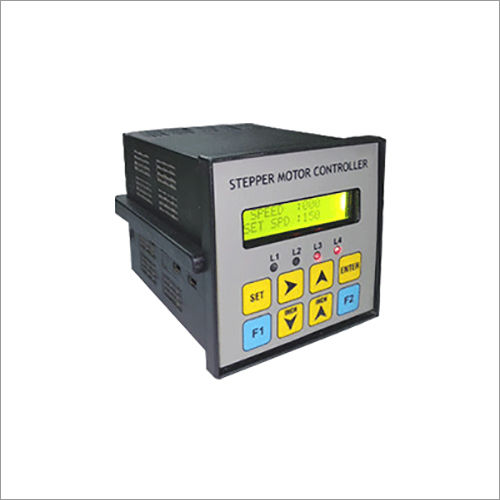Stepper Motor Drive Price
- 1 Piece
- 3200 INR/Piece
Stepper Motor Drive Specification
- MS
- Black
Stepper Motor Drive Trade Information
- 5 Piece Per Day
- 1-7 Days
Product Description
A stepper motor drive, otherwise called a stepper motor driver or stepper driver, is a fundamental part in a stepper motor control framework. It is liable for changing over electrical signals or orders from a regulator, for example, a microcontroller or PC, into exact and controlled movement in a stepper motor. Stepper motor drives are critical for controlling the speed, bearing, and position of the motor precisely.
FAQs of Stepper Motor Drive:
Q: What is the essential capability of a stepper motor drive?
A: The essential capability of a stepper motor drive is to produce the vital electrical signs to control the development of a stepper motor. It decides the timing and succession of these signs, which, thus, decide the heading and distance of each step the motor takes.
Q: How does a stepper motor drive work?
A: A stepper motor drive creates electrical heartbeats or signs that are shipped off the windings of a stepper motor. By controlling the timing and grouping of these heartbeats, the drive makes the motor move in discrete advances. The drive can work in different modes, including full-venturing and microstepping, to accomplish various degrees of accuracy and perfection moving control.
Q: Might stepper at any point motor drives be utilized with various kinds of stepper motors?
A: Indeed, stepper motor drives can be utilized with different kinds of stepper motors, including bipolar and unipolar motors, as well as various sizes and step points. The drive ought to be matched to the particular motor's determinations and necessities.
Q: How would you choose the right stepper motor drive for an application?
A: Choosing the right stepper motor drive includes considering variables, for example, the sort of stepper motor, the necessary current and voltage evaluations, the ideal step goal, speed necessities, and the correspondence interface. The decision of drive ought to be viable with the motor and the particular necessities of the application for ideal execution.

Price:
- 50
- 100
- 200
- 250
- 500
- 1000+







 Send Inquiry
Send Inquiry
